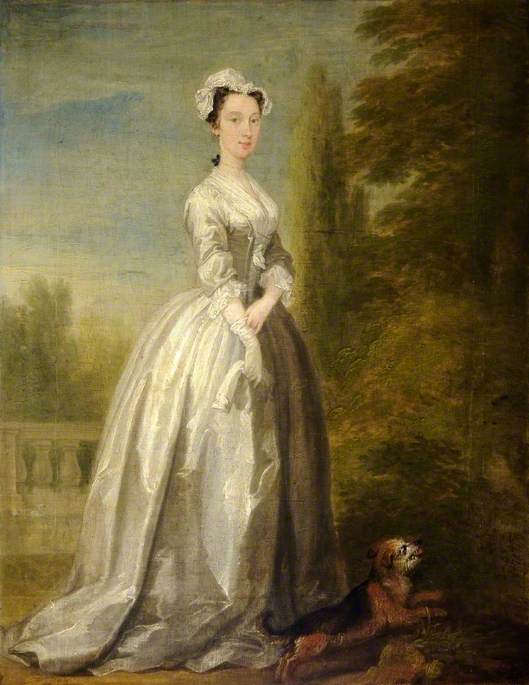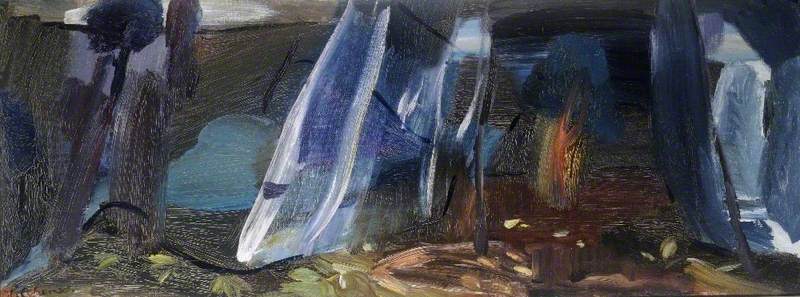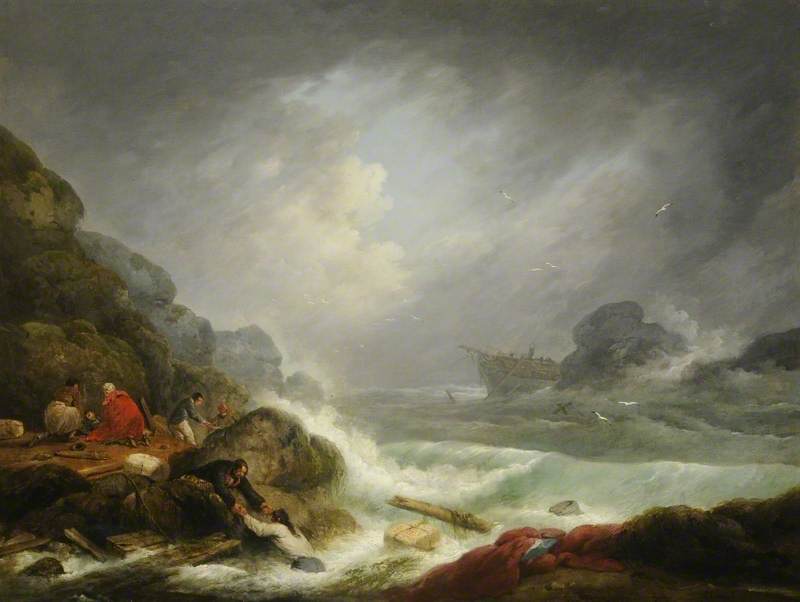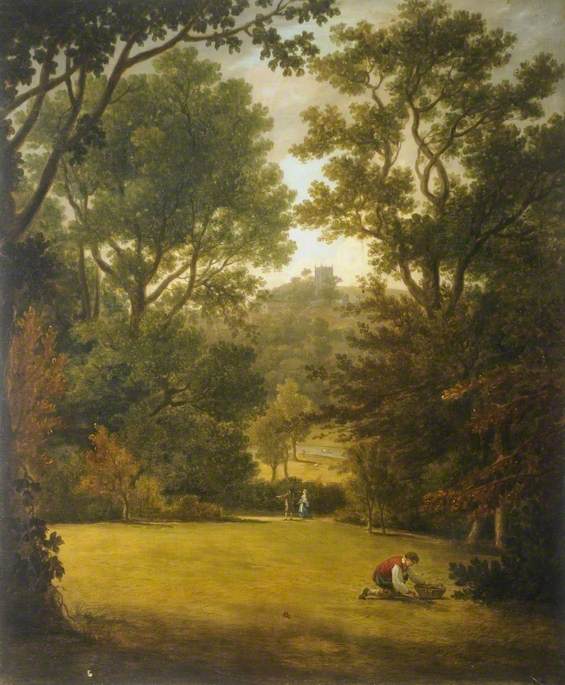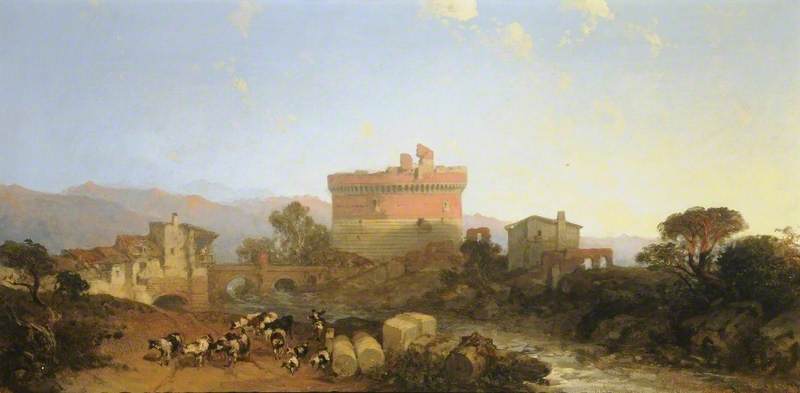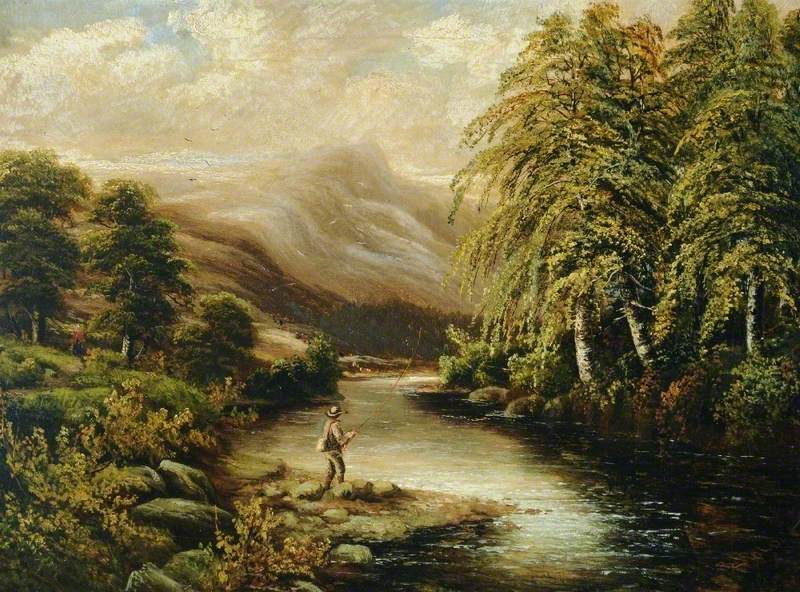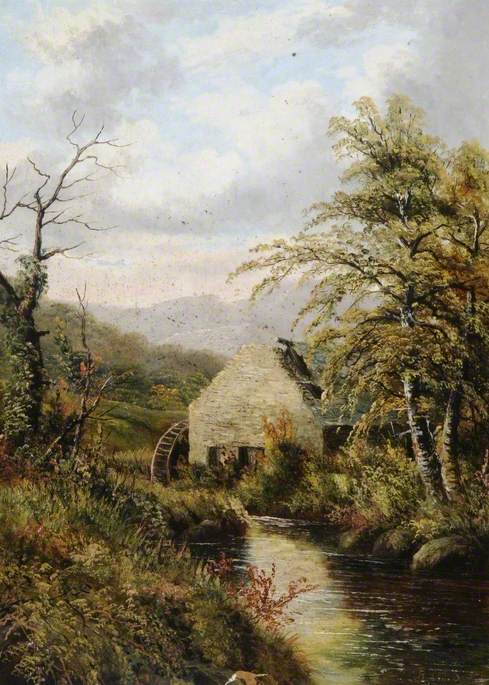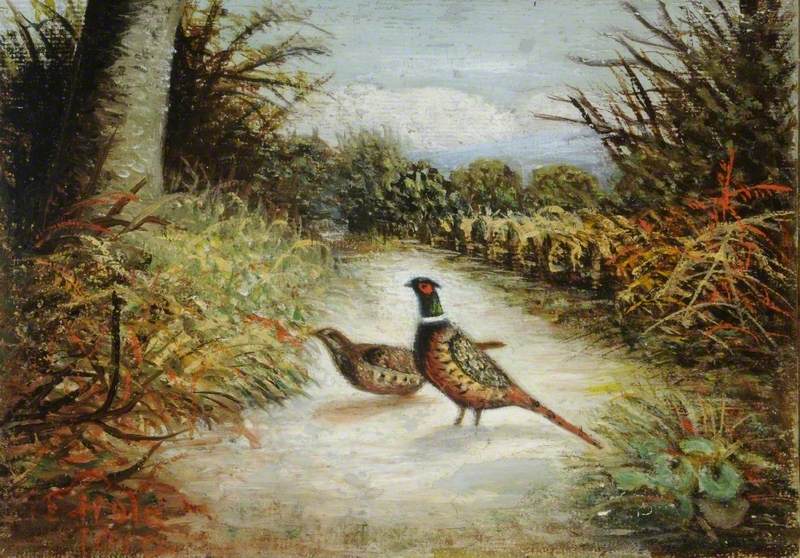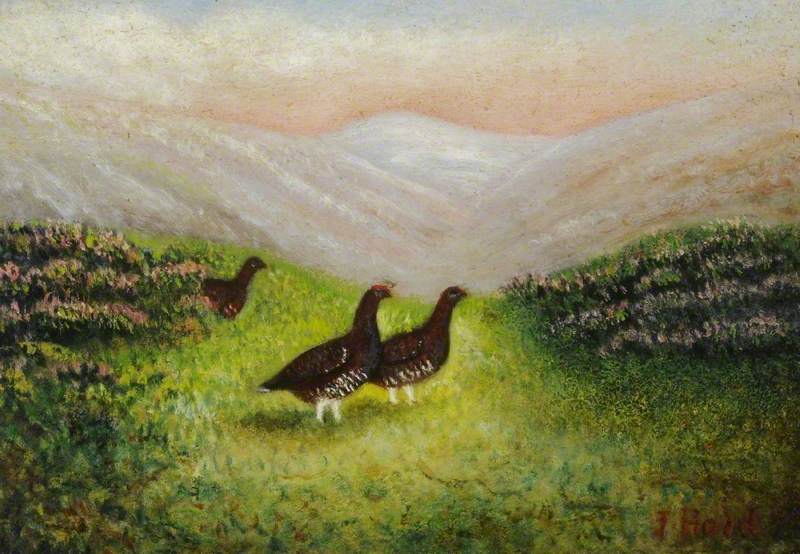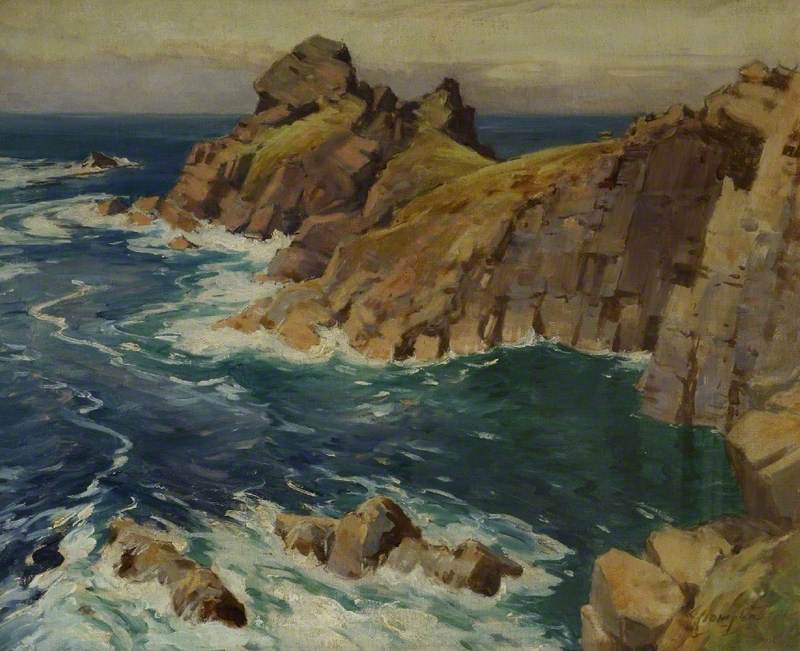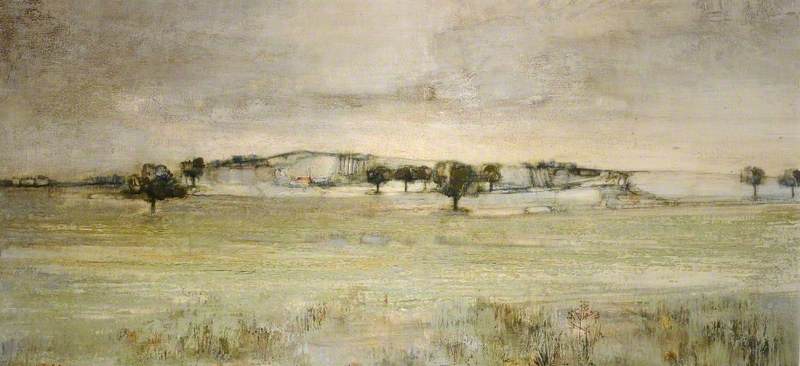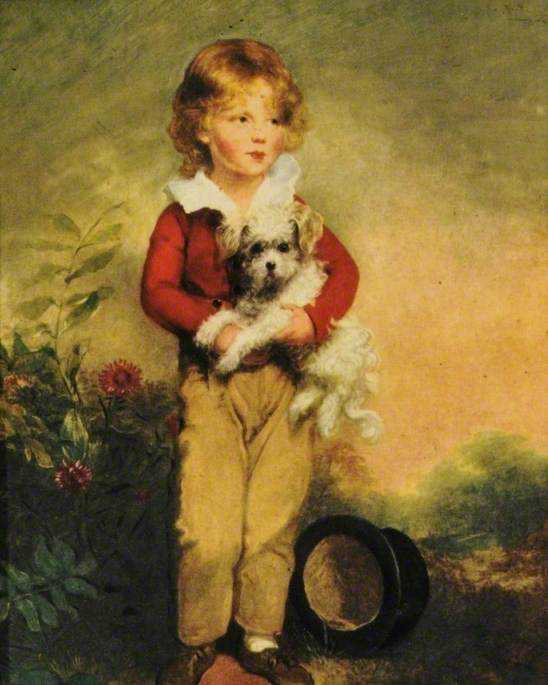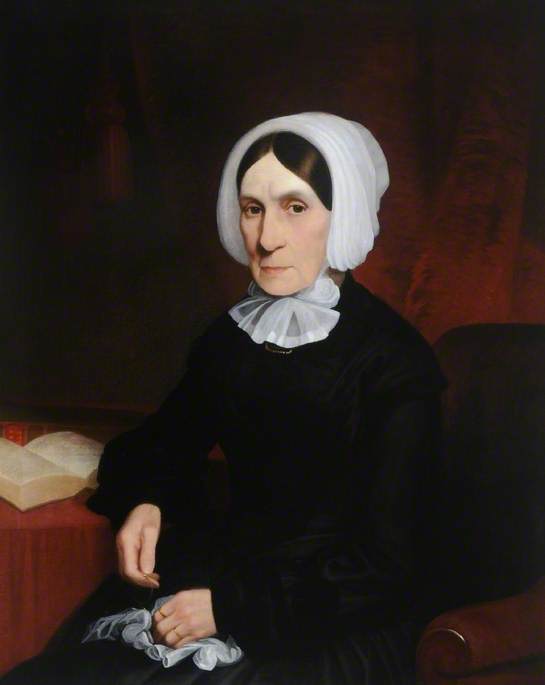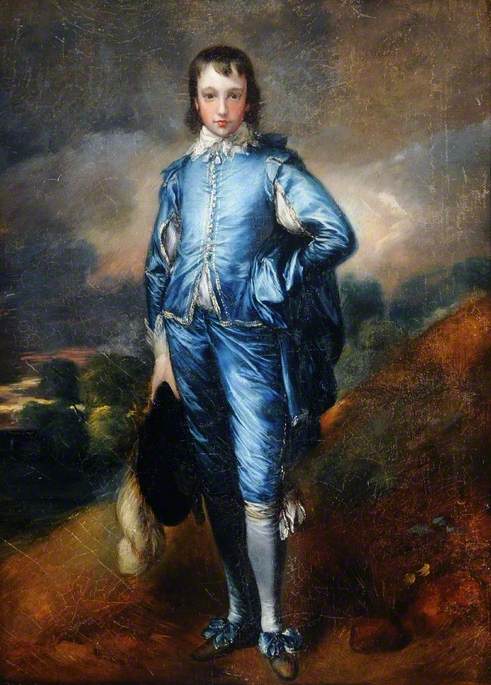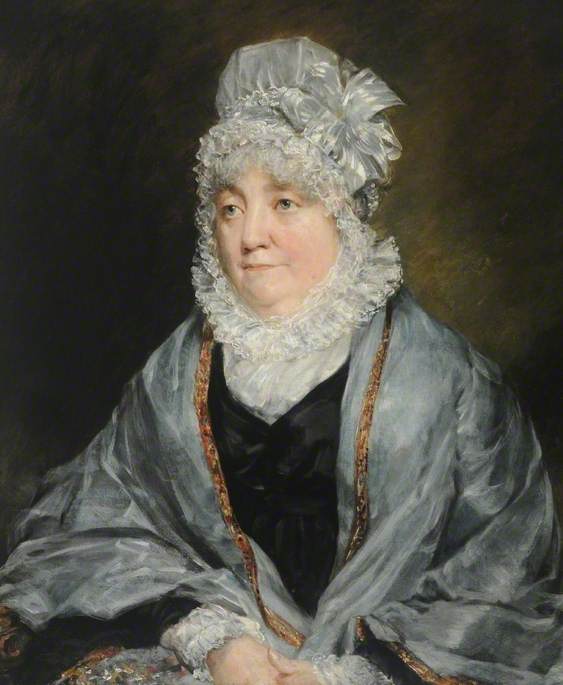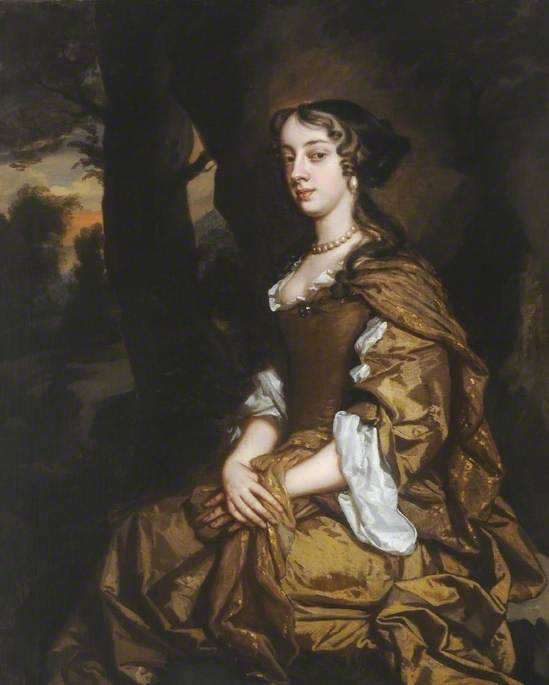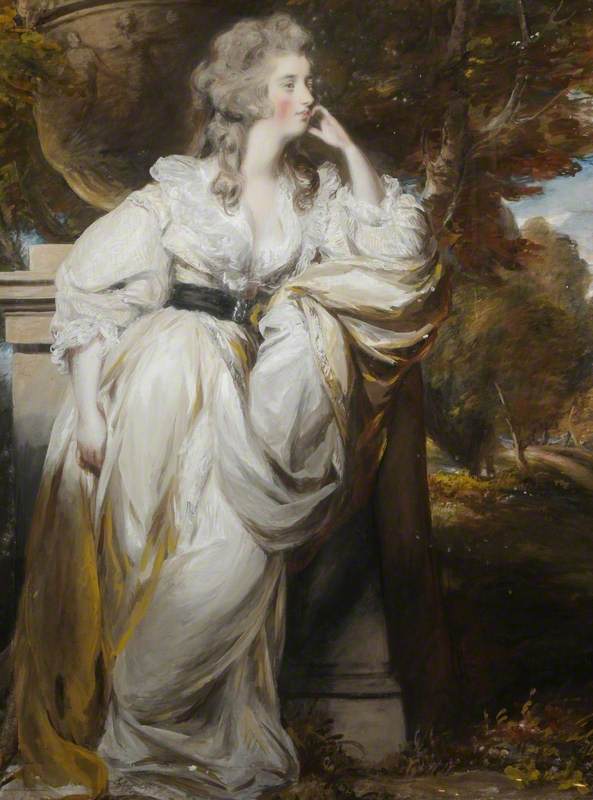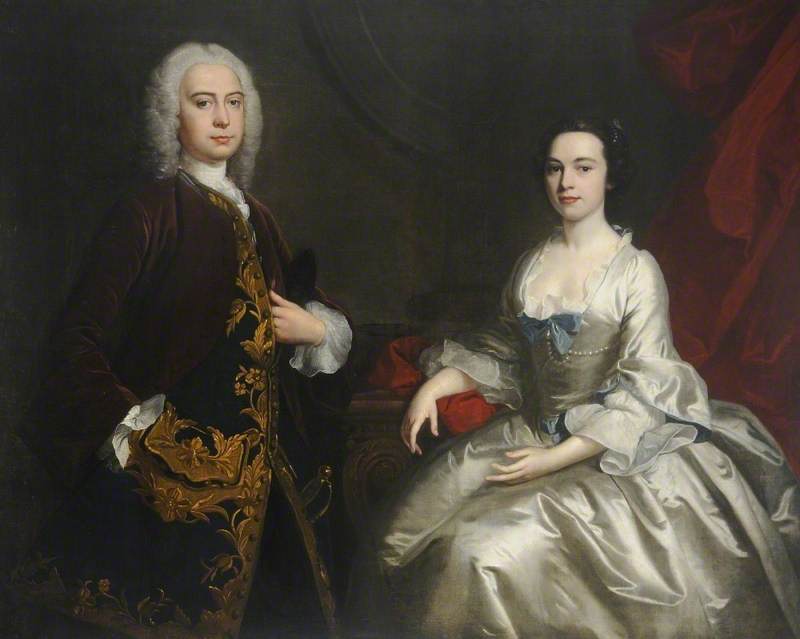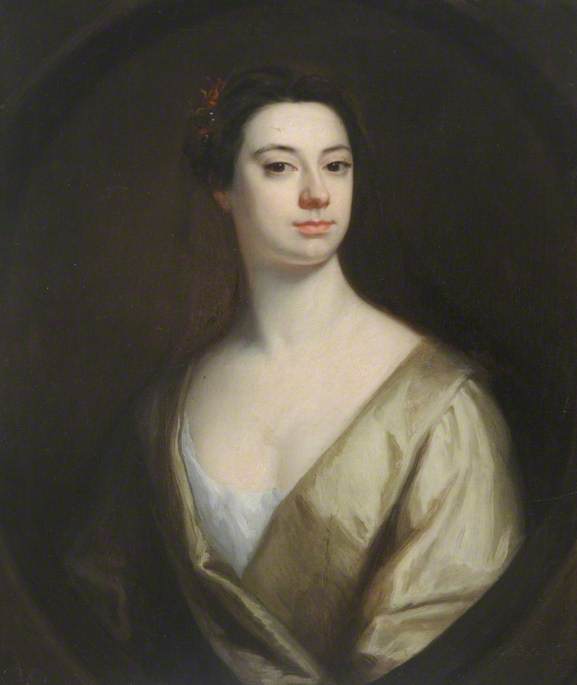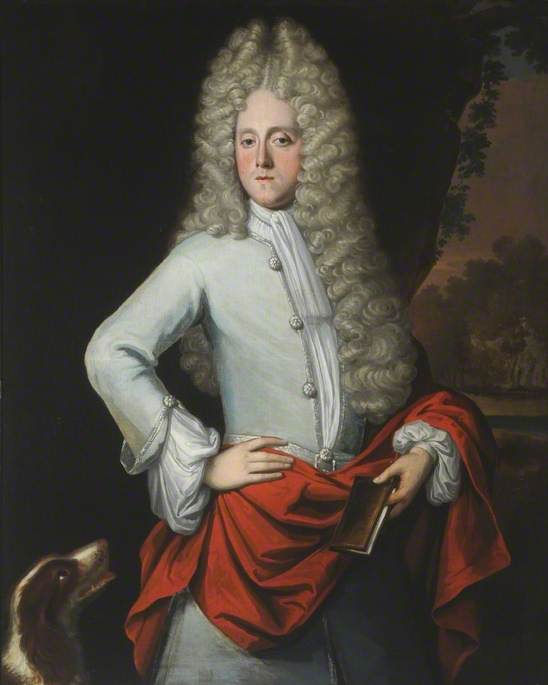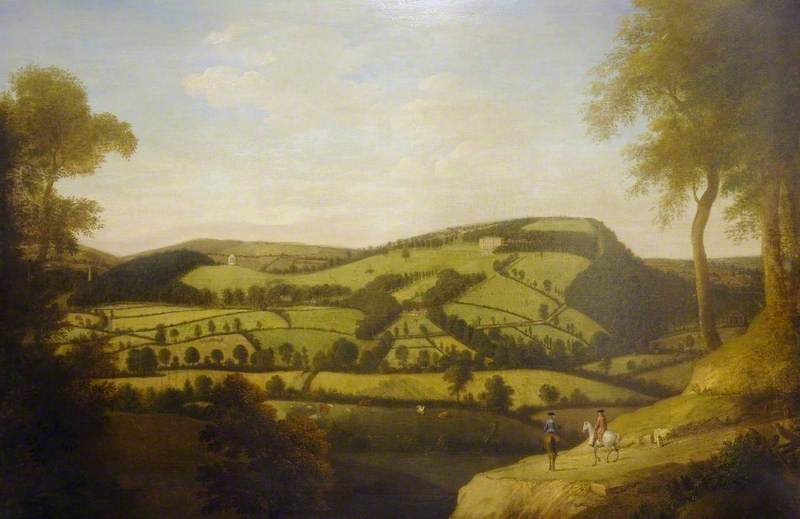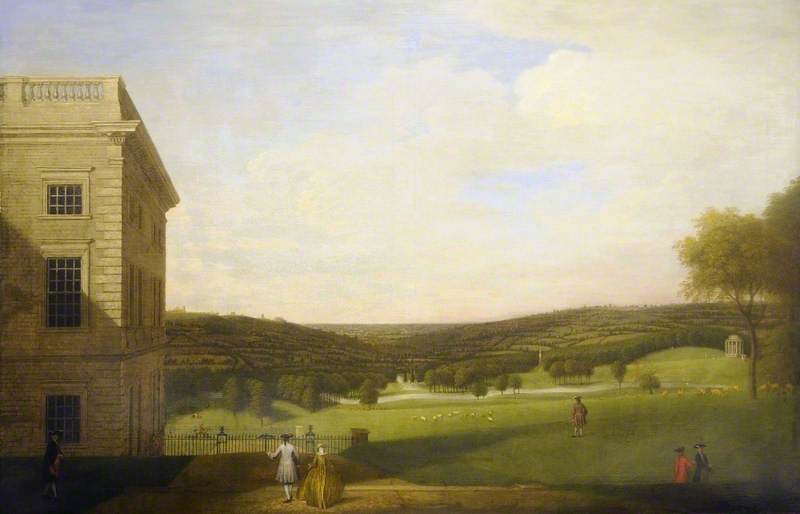Welcome to our latest Art UK curation bringing as much of the Hogarth to Hitchens exhibition at Cannon Hall into your home as possible.
The physical exhibition runs until 7 November https://www.cannon-hall.com/whats-on/hogarth-to-hitchens-great-british-artists-in-the-cannon-hall-collections
-
Following on from our successful exhibition of paintings by Dutch artists, this exhibition brings together works by British artists from the collections at Cannon Hall Museum. Themes of portraiture and landscape pictures by local and national artists ranging from the eighteenth to the twentieth centuries are on display.
The art of capturing a likeness is an ancient skill. William Hogarth is best remembered for his satirical paintings and prints but was also a well-respected portrait painter. His elegant Portrait of a Lady is a highlight of the exhibition. John Constable was also a skilled portrait painter and his painting of Mrs Tuder shows the sitters’ character as well as her wealth and status.
-
Landscape painting as a distinct form of art developed in the eighteenth century and led many British artists to capture and celebrate the countryside. Artists such as David Roberts travelled extensively and painted the landscapes of North Africa and Europe with Rome being a popular destination. Modern representations of landscape have often included a bolder use of colour and form such as the innovative work of Ivon Hitchens.
In the exhibition there are a number of works by local artists who established national reputations, such as Abel Hold, Joe Scarborough and new additions to the collection by Gertrude Crompton. You can explore more paintings by British artists highlighted in the displays.
-
Portrait of Lady Byron
Portrait of a LadyPortrait of Lady Frances Byron, nee Berkely wearing a white gown, with a dog at her feet. The third wife of the 4th Baron Byron. Daughter of the 4th Baron Berkeley of Stratton. Lady Byron was one of 21 women of influence who signed Thomas Coram's petition of 1729, which led to the foundation of the Foundling hospital.
William Hogarth was a English painter and engraver, the outstanding British artist of his period. During his childhood, his father, a schoolteacher, was imprisoned for debt & this early experience of the seamy side of life left a deep mark on Hogarth (much of his output is concerned with the contrast between success and failure, and he depicted prisons in several works)
Play the jigsaw https://bit.ly/HogarthHitchens1
William Hogarth (1697–1764)
Oil on canvas
H 44.5 x W 34.2 cm
Cannon Hall
-
Dark West Wood
Dark West WoodIvon Hithchens was a British painter, mainly of landscapes. He created a highly distinctive style, on the borderline between abstraction and figuration, in which broad, fluid areas of vibrant colour, typically on a canvas of wide format, evoke but do not represent the forms of the English countryside that were his main inspiration. From 1940, after his London studio was destroyed by bombing, he lived in Sussex. By this time his characteristic manner was fully developed and subsequently his work altered little, apart from the fact that his palette changed from naturalistic browns and greens to much more vivid colours such as bright yellows and purples.
Ivon Hitchens (1893–1979)
Oil on canvas
H 41 x W 108 cm
Cannon Hall
-
Shipwreck off a Rocky Coast
Shipwreck off a Rocky CoastGeorge Morland's early work was influenced by Francis Wheatley but after the 1790s he came into his own style. His best compositions focus on rustic scenes: farms and hunting; smugglers and gypsies; and rich, textured landscapes informed by Dutch Golden Age painting. He exhibited regularly at the Royal Academy from 1784 down to 1804. Morland was a prolific artist, in the last eight years of his life he produced more than nine hundred paintings
Play the jigsaw: https://bit.ly/HogarthHitchens2
George Morland (1763–1804)
Oil on canvas
H 69.5 x W 90 cm
Cannon Hall
-
Cawthorne Church, South Yorkshire, from the Park
Cawthorne Church, South Yorkshire, from the Park mid-18th CCawthorne, home to Cannon Hall Museum, Park & Gardens and the setting of this painting by an unknown artist.
The earliest reference to a church in Cawthorne can be found in the Domesday Book of 1086, the current church is the third to stand on this site. The present church was begun in the early 17th century, although it retains features from the earlier buildings. The north aisle arcade is 13th century, and the tower is 15th century. The north wall contains a late Anglo Saxon cross head. All Saints underwent extensive restoration in 1875, led by GF Bodley ARA.
https://www.explorechurches.org/church/all-saints-cawthorne
Play the jigsaw: https://bit.ly/HogarthHitchens3
British (English) School
Oil on canvas
H 100 x W 80 cm
Cannon Hall
-
The Mausoleum of Plautus Lucanus
The Mausoleum of Plautus LucanusThe archaeological site also includes, a great round tower (on the south bank of the river) that dates to the first century BCE, and the ruins of an inn dating from the 15th century. The round tower is in fact, the mausoleum of the Plautii, an illustrious Roman family who counted amongst its members Gaius Plautius Proculus, Gaius Plautius Venox and Marcus Plautius Silvanus.
David Roberts was a Scottish painter who travelled extensively throughout Europe as well as the Middle East and North Africa. He was elected as a Royal Academician in 1841.
Play the jigsaw: https://bit.ly/HogarthHitchens4
David Roberts (1796–1864)
Oil on canvas
H 45 x W 89.5 cm
Cannon Hall
-
A Wooded River Landscape
A Wooded River LandscapeWe don't know the location of this painting but the ambiguity adds to its beauty
Abel Hold was from Alverthorpe near Wakefield and was trained as a house painter. Soon after this he moved to Barnsley and lived in Church Street with his young family. In 1852 they moved to Cawthorne where Walter Spencer Stanhope of Cannon Hall became Abel’s patron.
For more information about the Hold family of artists: http://bit.ly/HoldFamily
Play the jigsaw: https://bit.ly/HogarthHitchens5
Abel Hold (1815–1896)
Oil on canvas
H 44.2 x W 33.8 cm
Cannon Hall
-
Fishing in the Highlands
Fishing in the HighlandsAnother member of the Hold family and another rural scene!
Benjamin Hold was one of the nine children of the artist Abel Hold. He was born in 1847 in
Barnsley, Yorkshire. Unfortunately, but all too common for the time, two of his sisters died
as babies but six boys and one girl survived to adulthood. Around 1852 the family moved to
Cawthorne village, a few miles away. His grandparents were Wakefield Quakers but by this
time it seems that his father was no longer a practising Quaker.
For more information about the Hold family of artists: http://bit.ly/HoldFamily
Play the jigsaw: https://bit.ly/HogarthHitchens6
Benjamin Hold (1858–1917)
Oil on canvas
H 29 x W 39 cm
Cannon Hall
-
View of Saw Mill at Cawthorne, South Yorkshire
View of Saw Mill at Cawthorne, South YorkshireThe saw mill in Cawthorne is Post-medieval (1540-1901) and would have been in walking distance of Benjamin Hold and the rest of the Hold family.
Play the jigsaw: https://bit.ly/HogarthHitchens7
Benjamin Hold (1858–1917)
Oil on canvas
H 33.3 x W 24.3 cm
Cannon Hall
-
Landscape With a River
Landscape with a RiverAfter her mother’s death in 1886 Florence Hold continued to look after her father. She never married
and when Abel died, in 1896, she left Brook House and needed to earn her own living. She
was just two years younger than her brother Joseph and went to live with him and his family.
He was a gamekeeper in Cleobury Mortimer, Shropshire and when they later moved to Great
Marlow, Buckinghamshire she moved with them. During this time she described herself as
an artist.
Florence must have watched her father painting for many years and like him she chose
subjects from nature that she painted in oils like this one
For more information about the Hold family of artists: http://bit.ly/HoldFamily
Play the jigsaw: https://bit.ly/HogarthHitchens8
Florence Hold (1860–after 1913) (attributed to)
Oil on canvas
H 12.5 x W 17.5 cm
Cannon Hall
-
Landscape With Birds
Landscape with BirdsPlay the jigsaw: https://bit.ly/HogarthHitchens9
Florence Hold (1860–after 1913) (attributed to)
Oil on canvas
H 12 x W 16.3 cm
Cannon Hall
-
Autumn in Upper Wharfdale, North Yorkshire
Autumn in Upper Wharfdale, North YorkshireGertrude Crompton was an accomplished amateur artist. She travelled extensively around England, and occasionally visited Europe, painting wherever she went. She was trained at the Westminster School of Art and in Paris, and exhibited regularly in London.
She bequeathed a group of paintings to the Victoria Art Gallery because she loved Bath – not just for the city’s beauty, but also because she gained relief from arthritis through thermal treatment there.
Gertrude Crompton (1874–1959)
Oil on board
H 39.5 x W 46 cm
Victoria Art Gallery
-
Gurnard's Head, Cornwall
Gurnard's Head, CornwallGurnard's Head is the site of basaltic pillow lavas, formed by underwater volcanic eruptions up to 400 million years ago.[3]
It is north of the hamlet of Treen in the parish of Zennor, one mile to the west of Zennor Head. Almost entirely owned by the National Trust, the headland is within the Aire Point to Carrick Du SSSI, and the 630 miles (1,010 km) South West Coast Path crosses the southern part of the headland. The headland was popular with tourists' during Queen Victoria's reign. The headland is the site of an Iron Age promontory fort known as Trereen Dinas
Gertrude Crompton (1874–1959)
Oil on canvas
H 51 x W 61 cm
Victoria Art Gallery
-
Paysage (Landscape)
James Taylor (1925–2000)
Oil on plyboard
H 57.7 x W 117.7 cm
Cannon Hall
-
James Alexander Simpson
James Alexander Simpson 19th CPortrait of a young Alexander Simpson, wearing a red shirt with white collar. He is holding a dog and has a hat at his feet. Alexander Simpson (1795-1860) became a solicitor to the Foundling hospital.
Arthur William Devis was an English painter of history paintings and portraits. He painted portraits and historical subjects, sixty-five of which he exhibited (1779–1821) at the Royal Academy. Among his more famous works are a depiction of the Death of Nelson and a posthumous portrait of Nelson.
Play the jigsaw https://bit.ly/HogarthHitchens10
Arthur William Devis (1762–1822) (after)
Oil on board
H 15 x W 12.5 cm
Cannon Hall
-
Mrs Elizabeth Spencer Stanhope
Mrs Elizabeth Spencer Stanhope (1795–1873) 1873Portrait of Mrs Elizabeth Spencer-Stanhope (in later life) seated in a red chair. She is wearing a black dress and a white bonnet. She is holding a white hanky in one hand and a pair of spectacles in the other. There is a open book on a table with a red tablecloth.
Abel Hold was from Alverthorpe near Wakefield and was trained as a house painter. Soon after this he moved to Barnsley and lived in Church Street with his young family. In 1852 they moved to Cawthorne where Walter Spencer Stanhope of Cannon Hall became Abel’s patron.
For more information about the Hold family of artists: http://bit.ly/HoldFamily
Play the jigsaw: https://bit.ly/HogarthHitchens12
Abel Hold (1815–1896)
Oil on canvas
H 89.8 x W 72.3 cm
Cannon Hall
-
Copy of Gainsborough's Blue Boy
Blue BoyHenry Bone RA was an English enamel painter who was officially employed in that capacity by three successive monarchs, George III, George IV and William IV. In his early career he worked as a porcelain and jewelry painter. He was elected a Royal Academician and produced the largest enamel paintings ever seen up to that time.
Play the jigsaw:https://bit.ly/HogarthHitchens13
Henry Bone (1755–1834)
Oil on canvas
H 51.2 x W 37.3 cm
Cannon Hall
-
Mrs Tuder
Mrs Tuder 1818John Constable painted this portrait shortly after his marriage (1818) when he seems to have been trying to secure a living from portrait commissions, and painted more portraits in this year than at any other point. Soon after his landscapes became more successful and far fewer portraits exist after this date. Ranked with his contemporary Turner as one of the two greatest figures in the history of British landscape painting.
Play the jigsaw: https://bit.ly/HogarthHitchens11
John Constable (1776–1837)
Oil on canvas
H 73.5 x W 60.8 cm
Cannon Hall
-
Follow a Trail or take a virtual tour
That's the end of the artwork which features in the exhibition, however there are many more British artists featured in the museum, some of these follow below and you can also take a virtual tour https://my.matterport.com/show-mds?sr=&m=daVW1PYwyb4
-
Lady Houlbon
Lady Houblon 1670–1680Sarah Wynne, subsequently Lady Houblon was wife of Sir James Houblon, who was appointed director of the newly formed Bank of England in 1694. He was elected an Alderman of the City of London in 1692, and was knighted shortly afterwards.
Sir Peter Lely was a painter of Dutch origin whose career was nearly all spent in England, where he became the dominant portrait painter to the court. His family name was originally van der Faes, and the name Lely is said to have come from a lily carved on the house in The Hague where his father was born. Lely was born in Germany (where his father, a captain of infantry, was stationed) and trained in Haarlem.
Play the jigsaw: https://bit.ly/HogarthHitchens14
Peter Lely (1618–1680) (attributed to)
Oil on canvas
H 125.5 x W 99.5 cm
Cannon Hall
-
Margaret Roberts Coke, Lady Hunloke
Margaret Roberts Hunloke née Coke (1751–1821) 1781Margaret was the daughter of Wenman Coke MP and Elizabeth Coke (nee Chamberlayne) of Holkham Hall, Norfolk. Margaret married Sir Henry Hunloke, 4th Baronet of Wingerworth Hall, Derbyshire, in 1769 and this portrait would have been painted when she was about 29. They had three children, Henrietta, Thomas Windsor and Charlotte Susannah. Margaret's niece, Elizabeth Wilhelmina Coke (1795-1873) married John Spencer Stanhope of Cannon Hall in 1822.
Daniel Gardner was born into a middle class family and at some time before 1762 was taught by George Romney. He studied at the Royal Academy Schools from 1770. His work is characterised by a nervous and agitated style
Play the jigsaw: https://bit.ly/HogarthHitchens15
Daniel Gardner (1750–1805)
Oil & gouache on paper
H 130 x W 80 cm
Cannon Hall
-
Sir Willoughby Aston and his wife
Sir Willoughby Aston and His WifeSir Willoughby Aston (1715 – 1772) was the fifth Baronet Aston, of Aston in the Parish of Runcorn, Cheshire. He married Elizabeth Pye in 1744, and was member of parliament for Nottingham between 1754 and 1761. The painting may have been commissioned soon after their wedding.
Joseph Highmore originally studied law but found it dull and turned to art as a career. He secured commissions for portraits from royalty and aristocracy, but mainly painted middle-class sitters.
Play the jigsaw: https://bit.ly/HogarthHitchens16
Joseph Highmore (1692–1780)
Oil on canvas
H 125 x W 155.5 cm
Cannon Hall
-
Portrait of a Lady
Portrait of a Lady early 18th CPortrait of a Lady early 18th century British School
Play the jigsaw: https://bit.ly/HogarthHitchens16
British School
Oil on canvas
H 103.7 x W 81 cm
Cannon Hall
-
Sir William Lowther
Sir William Lowther (1663–1729), 1st Bt 1712Sir William Lowther was born in Swillington, West Yorkshire and was born into a privileged family, educated in Yorkshire and at Cambridge before studying law at Gray’s Inn. He married Annabella Maynard and together they had five children. He served as High Sheriff of Yorkshire and was made a Baronet.
Play the jigsaw: https://bit.ly/HogarthHitchens18
unknown artist
Oil on canvas
H 125.2 x W 99.5 cm
Cannon Hall
-
Wentworth Castle Estate, Barnsley, South Yorkshire
Wentworth Castle Estate, Barnsley, South Yorkshire c.1751–1752The breath-taking views of the Wentworth Castle Estate in the 1750s. You can now visit Wentworth Castle Gardens, more information here: https://www.nationaltrust.org.uk/wentworth-castle-gardens
Thomas Bardwell initially earned his living as a painter of decorative panels for his family's business in Bungay, Suffolk.
His earliest known portraits are two conversation pieces dated 1736; one, possibly showing the Brewster family of Beccles, is in the collection of the Geffrye Museum. In 1746 he was commissioned by the artillery company in Norwich to paint a portrait of William Crowe (who became mayor the following year)
Play the jigsaw: http://bit.ly/HogarthHitchens20
Thomas Bardwell (1704–1767) (attributed to)
Oil on canvas
H 119.5 x W 180.5 cm
Cannon Hall
-
Wentworth Castle Estate, Barnsley, South Yorkshire c.1751–1752
Play the jigsaw: http://bit.ly/HogarthHitchens19
Thomas Bardwell (1704–1767) (attributed to)
Oil on canvas
H 119.5 x W 180.5 cm
Cannon Hall
-
Thank you for visiting our virtual exhibition of Hogarth to Hitchens, you can see the exhibition at Cannon Hall until 7 November 2021
Explore artists in this Curation
View all 17-
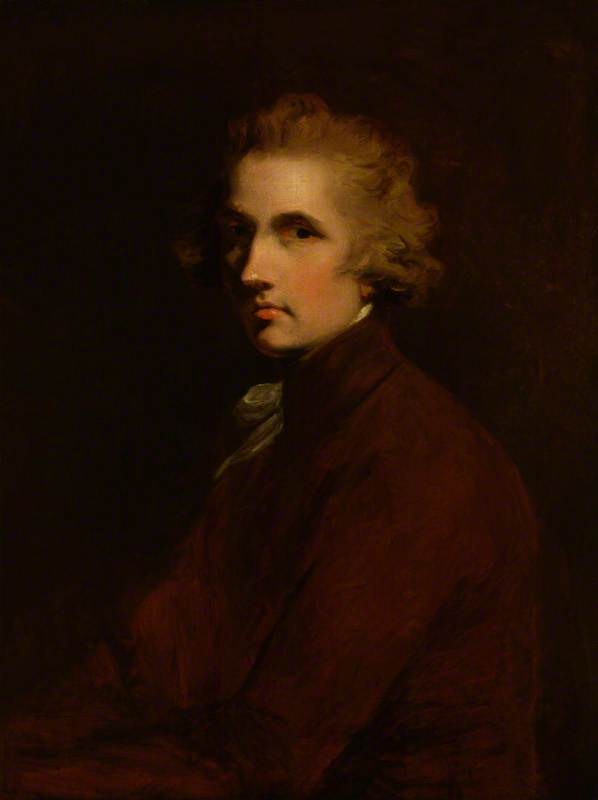 Daniel Gardner (1750–1805)
Daniel Gardner (1750–1805) -
 Ivon Hitchens (1893–1979)
Ivon Hitchens (1893–1979) -
 James Taylor (1925–2000)
James Taylor (1925–2000) -
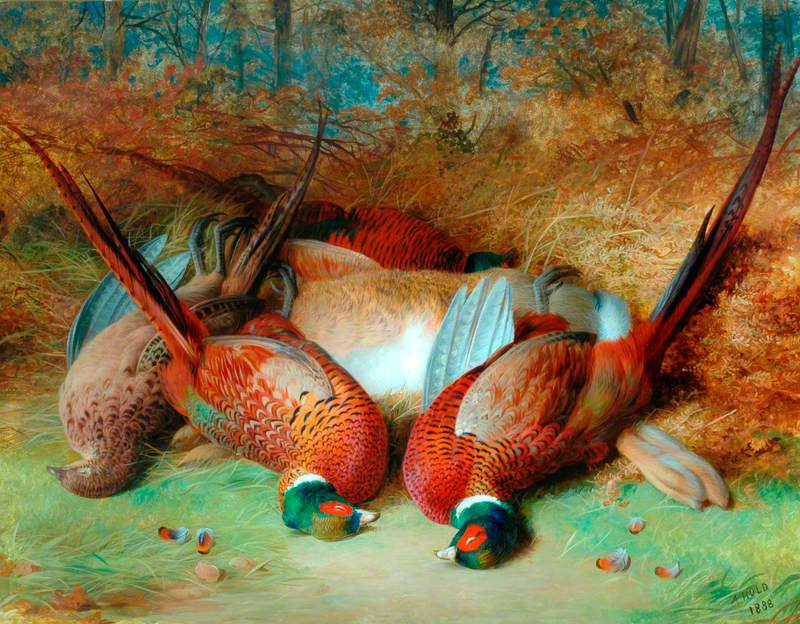 Abel Hold (1815–1896)
Abel Hold (1815–1896) -
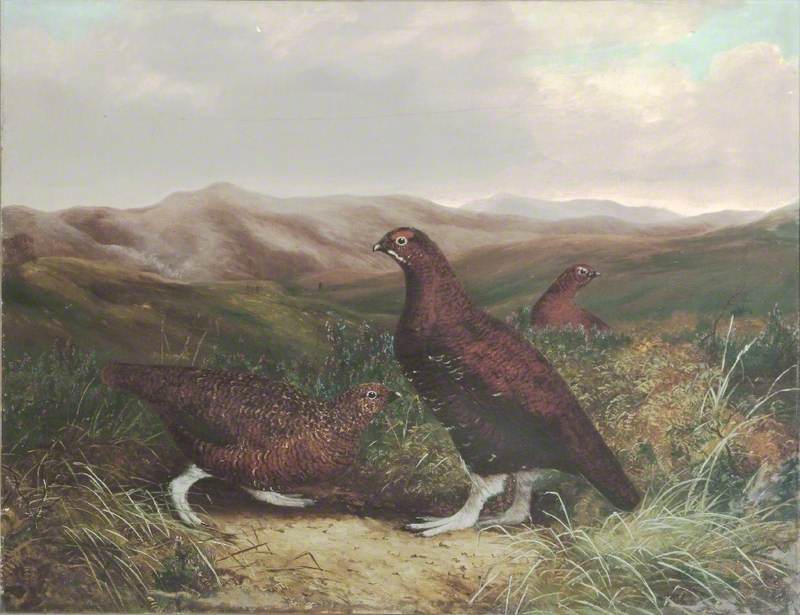 Benjamin Hold (1858–1917)
Benjamin Hold (1858–1917) -
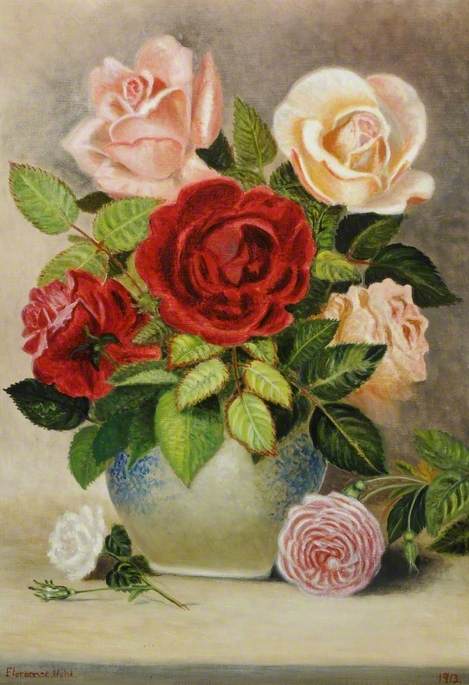 Florence Hold (1860–after 1913)
Florence Hold (1860–after 1913) -
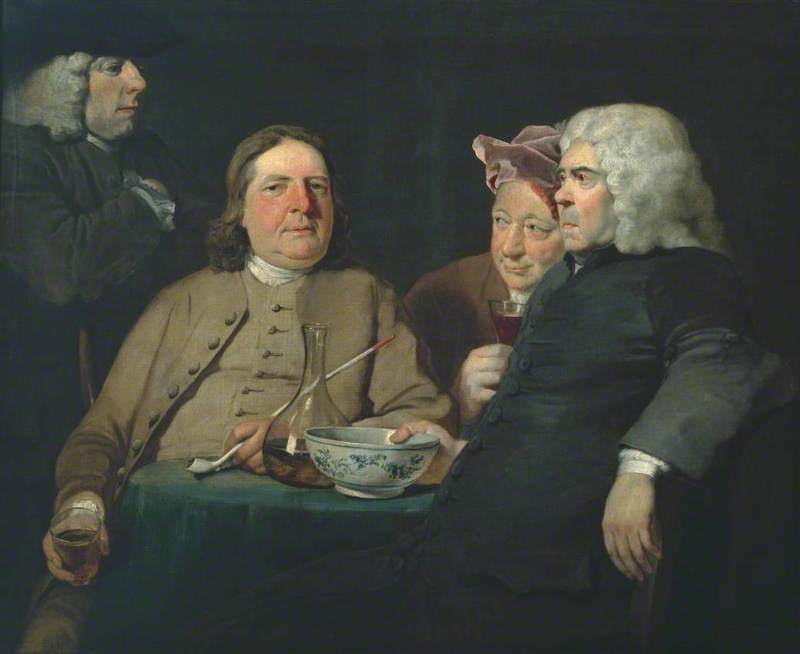 Joseph Highmore (1692–1780)
Joseph Highmore (1692–1780) -
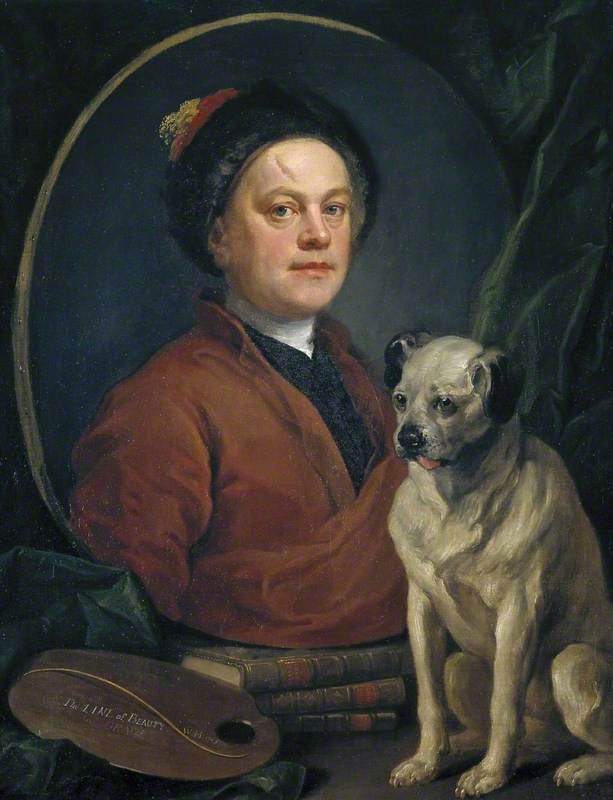 William Hogarth (1697–1764)
William Hogarth (1697–1764) -
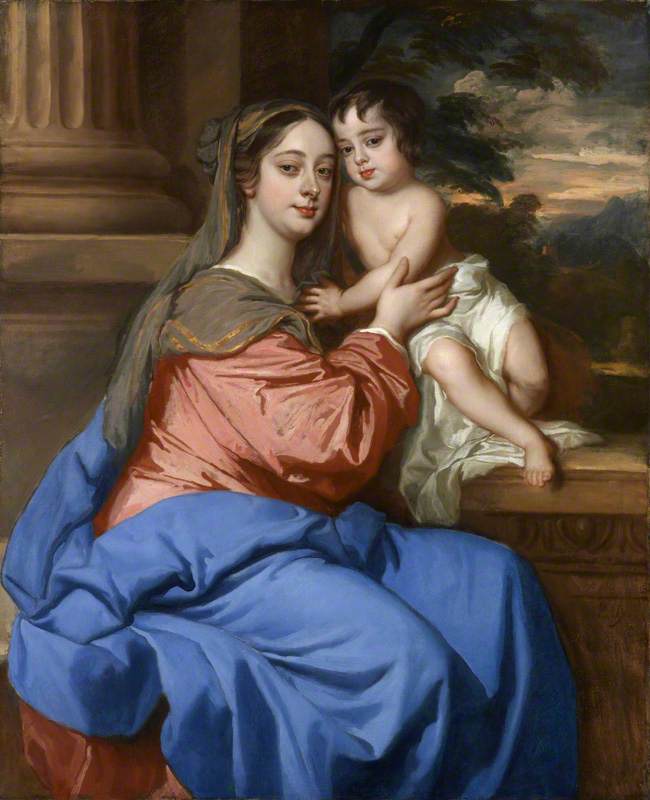 Peter Lely (1618–1680)
Peter Lely (1618–1680) -
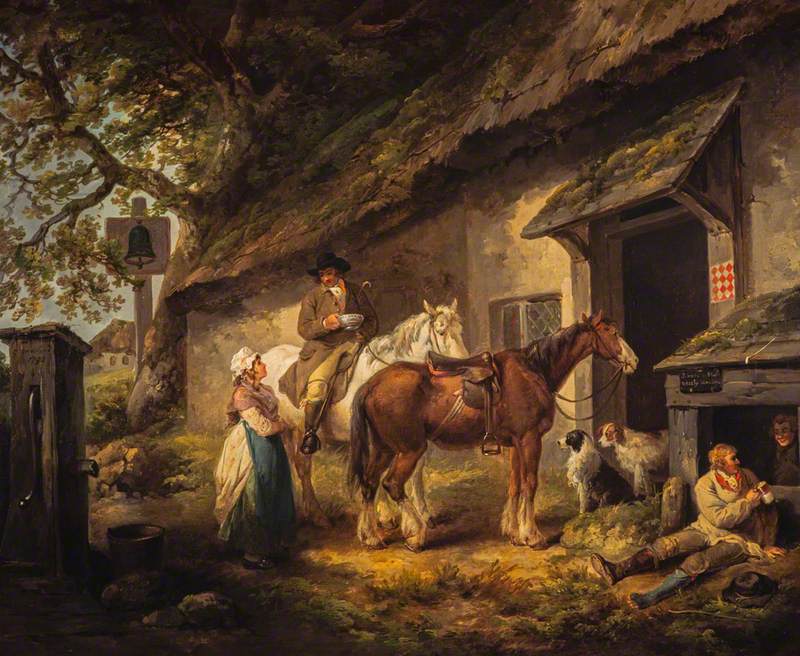 George Morland (1763–1804)
George Morland (1763–1804) - View all 17
